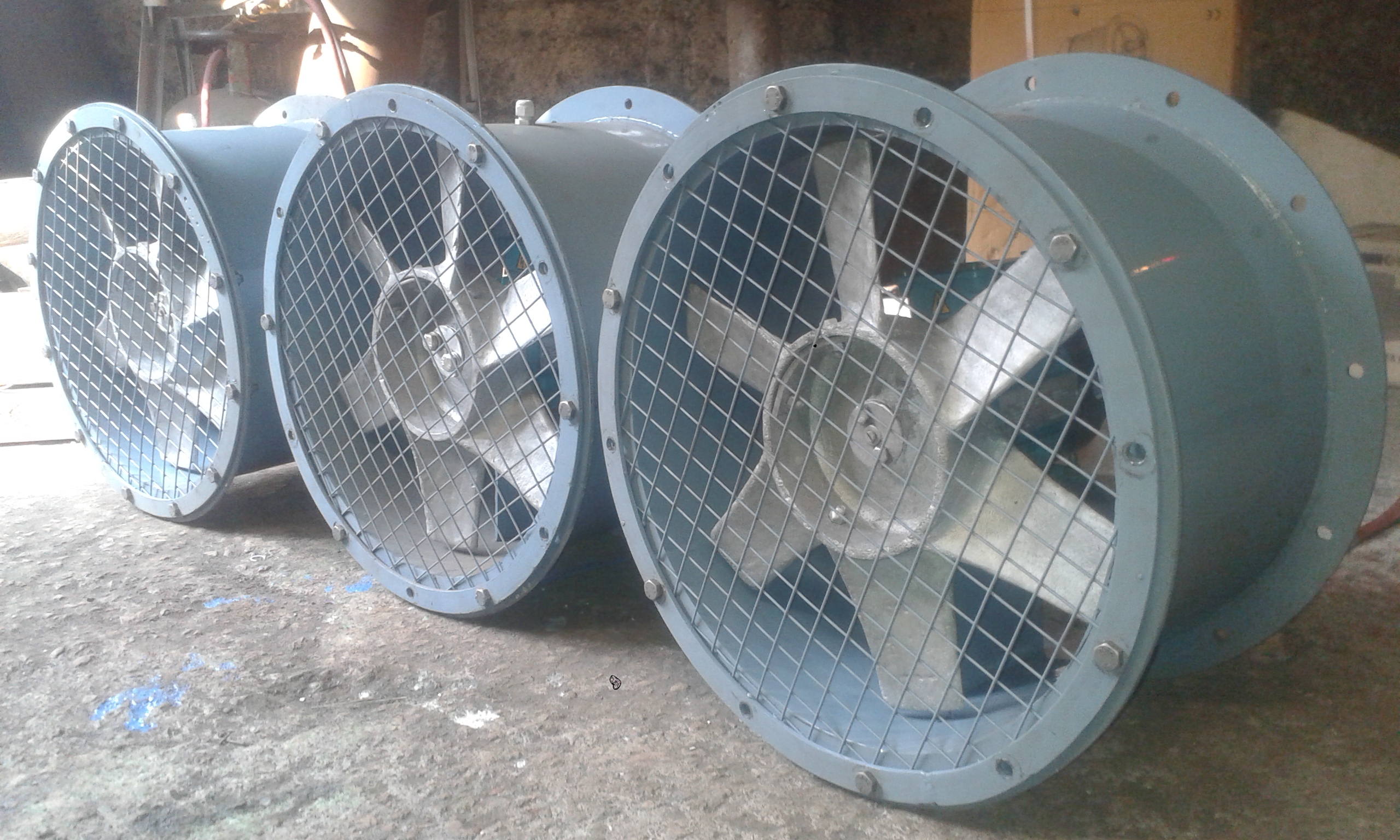ALL ABOUT AIR BLOWERS .COM
Axial Fans
Axial Fans are those in which air enters and leaves the fan parallel to the axis of rotation. Ceiling fans, table fans and exhaust fans used at home are some of varities of "Axial Fan".
Flow is generated by rotation of
blades which sweeps the air from inlet to outlet side. Quantity
of flow generated depends on blade angle, diameter of fan and rotation
speed. Axial Fans are typically used for high flow and low
pressure application. Axial Fans are often used for free air delivery
application (without ducting). Although it is possible to increase the
Pressure of air to some extent by using axial fans but it results in
poor efficiency and high noise level.
Typical application of axial fans are as follows
- Ventilation & Exhaust Fans
- Man Coolers & cooling applications
- HVAC
Axial Fans used in industries are mostly tube axial fans. Tube Axial Fans are suitable foro heavy duty applications. Tubular Shell helps to guide the air smoothly over the blades. Fan is made of either aluminum casting or fabricated from Mild Steel/ Stainless Steel. Use of aluminium casting makes fan lighter in weight and energy efficient. Tube axial fans are either direct drive (fan mounted on motor shaft, motor fitted inside tubular shell) or Belt Drive (fan mounted on shaft & bearing arrangement inside tubular shell). Direct Drive Axial Fans can be used were air temperature entering the Axial Fan is less than 60deg. C. For high temperature applications belt drive is recommended. Tube axial fans are provided with wire mest protection at inlet and outlet.
